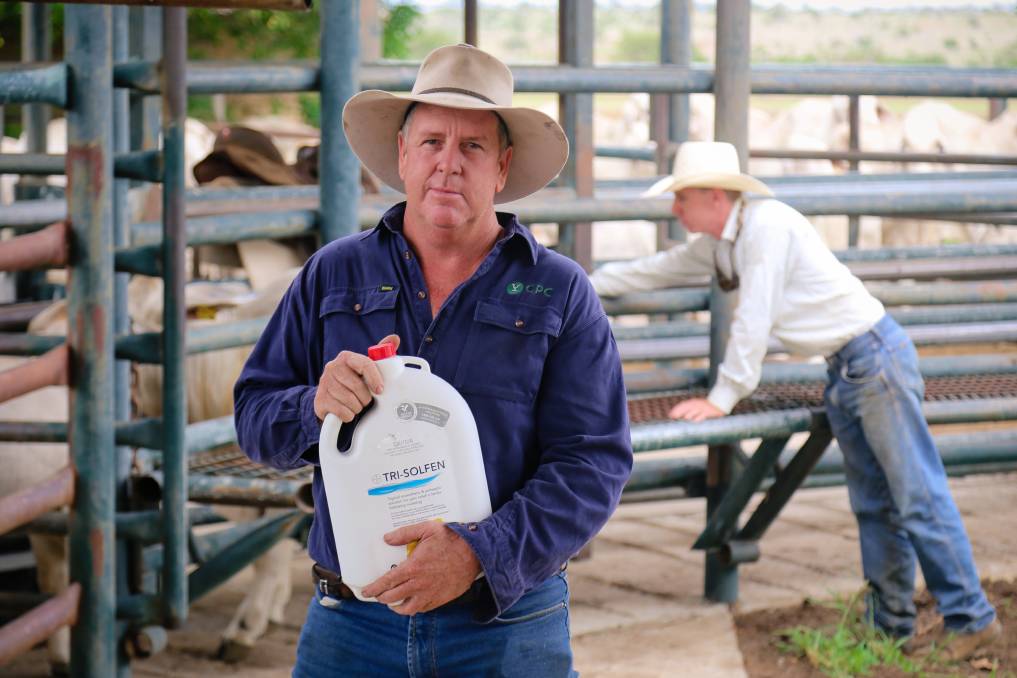Tri-Solfen® no Risk to Humans, Animals or Trade Report
February 7, 2013
Letter by Prof J G McLean BVSc, PhD, HDA(Hons), Comp IE Aust, Professor Emeritus – 13 August 2009
Mr James Suter
Acting Program Manager
Veterinary Medicines
APVMA
Symonston ACT 2609
Dear Mr Suter
Tri-Solfen Topical Solution
Thank you for the opportunity to review the residue requirements for Tri-Solfen (TS)
for registration. I believe the new information submitted by Dr Ruth Davis is well
argued and worthy of consideration.
The major issues are food safety and trade. The active constituents are lignocaine
LIG), bupivicaine (BUP and cetrimide (CET), all of which have been used for many
years in human and animal medicine. They are formulated together in TS and used as
a post-mulesing dressing in lambs. The recommended age for mulesing is 2-12 weeks.
with the maximum allowed under the Commonwealth Government Model Code of
Practice for Welfare of Animals (Code) being 12 months.
Mulesing is only carried out on young sheep that are destined for wool production. In
reality, the three actives would have disappeared long before the sheep ever entered
the human food chain. The interval is likely to be many years, with some sheep
actually dying beforehand and others being used for pet food.
The three actives are used topically in humans, and LIG and BUP are also
administered parenterally. The ingestion of resides from TS are of no consideration in
human health.
In relation to trade issues, it is stated that over 5 million sheep have been treated under
an APVMA permit with a meat WHP of 90 days, and there have been no reported
residue violations. The EU has considered CET and found it not necessary to establish
an MRL but rather included it Annex II of it regulations, which is an equivalent to
the Australian residue standard entry on Table 5. The Australian Office of Chemical
Safety has found that if any residues of CET in meat would be of no toxicological
concern. LIG and BUP are metabolised rapidly and the breakdown products do not
represent a hazard.
There was a suggestion that the CET concentration be reduced so as to decrease the
possibility of resides. I do not believe this reduction to be necessary and would not
support it because it decreases the efficacy of the product as a post-mulesing dressing.
In relation difficulties in making a suitable radio-labelled CET for residue studies, I
do not fully accept that it is not possible. However, I concede that it would be
technically difficult because it would involve purifying CET before radio-labelling the
major component. The absence of adequate facilities to conduct radio-labelled residue
studies is also noted, as is the worldwide shortage of such facilities. This may present
the opportunity for the establishment of such facilities in Australia, with some
government assistance.
In summary, I do not believe there is any human health, food safety or trade issues
related to the use of CET, LIG or BUP formulated into a post-mulesing dressing for
wool producing sheep, as they are formulated in TS.
Accordingly, I would recommend that cetrimide, lignocaine and bupivacaine each be
given a Table 5 entry in the Maximum Residue Limit Standard, with the qualifier
“when used as a post-mulesing treatment in sheep intended for wool production”. I
would further restrict their use to formulation into a specified product, such as TriSolfen.
In addition, any animals treated with TS should be identified in the National
Livestock Identification Scheme (NLIS). Furthermore, if a withholding period of 90
days is specified for TS, this will result in the requirement when animals are sold, for
the vendor to make a declaration related to treatment. Therefore, any animals treated
with TS, will then be able to be traced.
Finally, I would recommend that it be specified that all mulesing be carried according
to the Code of Practice for the Welfare of Animals. This will ensure that sheep
subsequently dressed with Tri-Sulfen fulfil all the guidelines specified in the Code
relating to mulesing. These include such matters as key indicators for mulesing, age
for mulesing and post-mulesing management. This requirement would mean that the
use pattern for TS is further defined and regulated.
I trust that this report will enable you to make progress in this registration. Please do
not hesitate to get back to me if I can be of any further assistance.
Yours sincerely
J G (Jock) McLean
BVSc, PhD, HDA(Hons), Comp IE Aust
Professor Emeritus
